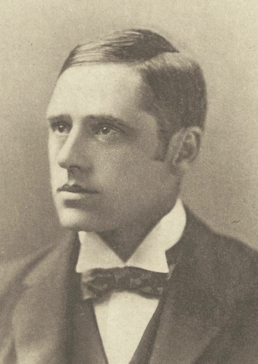These life stories may contain descriptions of childhood trauma and abuse, as well as images, voices and names of people now deceased. If you need help, you can find contact details for some relevant support services on our support page.
Iconic Australian bush poet, Banjo Paterson (1864-1941), was in kinship care from the age of ten.
Banjo Paterson was born Andrew Barton Paterson at Narambla near Orange in country New South Wales. He was the eldest of seven children born to Andrew Bogle Paterson and Rose Isabella. The family later moved to Illalong in the Yass Valley Council region, approximately 281 km south-west of Sydney.
Schooling for Barty, as Banjo Paterson was known in his family, was at home with a governess until he was able to ride to Binalong to attend a bush school.
Barty went to Sydney Grammar School in 1874. While at school he lived with his grandmother, Emily May Barton, in suburban Gladesville. Emily encouraged her grandson to read and write poetry.
When he was sixteen, Paterson began work as an articled clerk for a solicitor. He was “admitted to the Roll of Solicitors” by the time his first poetry was published in the Bulletin in 1885 under the name “The Banjo” (after a family race horse).
Paterson’s ballads included Clancy of the Overflow and The Man from Ironbark. They were so popular that Angus & Robertson published them as a collection, The Man from Snowy River, and Other Verses, in October 1895.
Paterson practiced as a lawyer until 1900. He then worked as a journalist, contributing articles for the Sydney Morning Herald and the Melbourne Argus during the Boer War and Boxer Rebellion.
By the verdict of the Australian people, and by his own conduct and precept, Paterson was, in every sense, a great Australian. Ballad-writer, horseman, bushman, overlander, squatter – he helped to make the Australian legend. Yet, in his lifetime, he was a living part of that legend in that, with the rare touch of the genuine folk-poet, and in words that seemed as natural as breathing, he made a balladry of the scattered lives of back-country Australians and immortalized them.
Banjo Patterson penned Australia’s best-known bush ballad, Waltzing Matilda, in 1895. The town of Winton in Queensland hosted a Waltzing Matilda day in 2012 and has a Waltzing Matilda Centre which celebrates life in the bush.
The Man from Snowy River (1890) was made into a classic Australian film in 1982, directed by George Miller and starring Sigrid Thornton and Kirk Douglas and including in the cast Jack Thompson.
Banjo Patterson is one of a number of historical figures featured on the Australian $10 note. His portrait by John Longstaff is in the Art Gallery of New South Wales; the portrait won the 1935 Archibald Prize.
Paterson died in Sydney of a heart attack in 1941 at the age of seventy-six. His grave is located in the Northern Suburbs Memorial Gardens and Crematorium in Sydney.
References:
“Andrew Barton (Banjo) Paterson [1864-1941] Biography”. Waltzing Matilda. http://www.waltzingmatilda.com/wmbanjo.html
Semmler, Clement. “Paterson, Andrew Barton (Banjo) (1864-1941).” Australian Dictionary of Biography, National Centre of Biography, Australian National University. http://adb.anu.edu.au/biography/paterson-andrew-barton-banjo-7972
Image available here.
